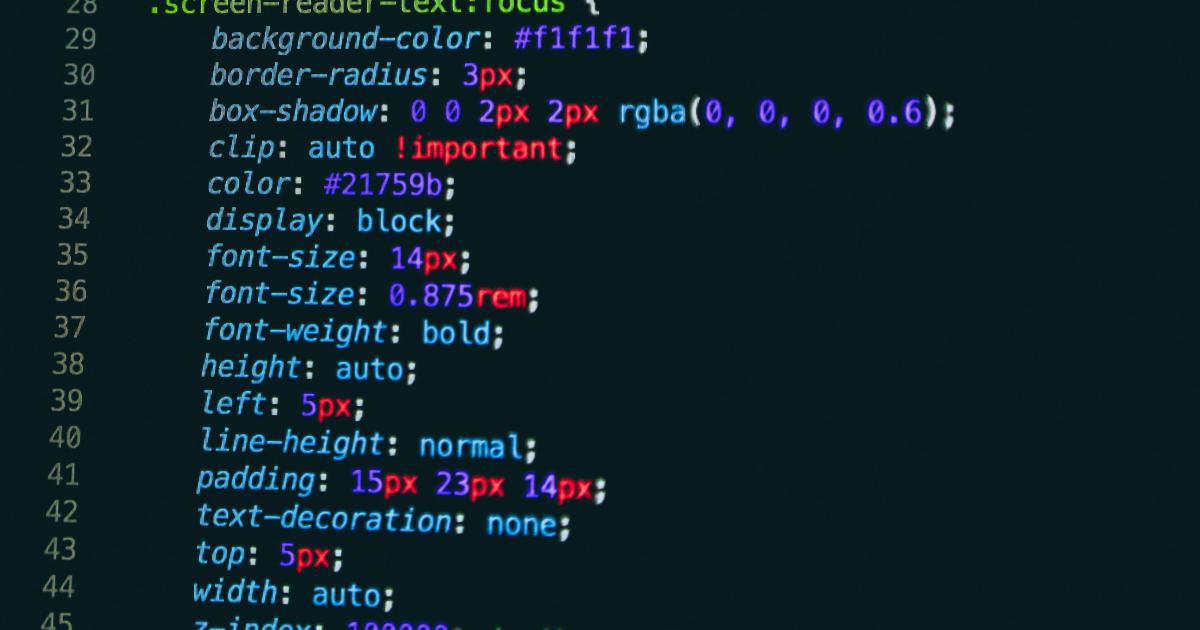Optimizing JavaScript for Improved Indexability


Introduction to JavaScript Indexability
JavaScript has become an integral part of modern web development, powering dynamic and interactive user experiences. However, as the complexity of web applications has grown, so too have the challenges of ensuring that JavaScript-driven content is easily discoverable and understood by search engines. Indexability, the ability of search engines to effectively crawl, understand, and index JavaScript-based content, has become a crucial consideration for developers and SEO professionals alike.

In this comprehensive article, we'll explore the importance of optimizing JavaScript for improved indexability, delving into strategies, best practices, and real-world examples that can help you unlock the full potential of your web content. By the end of this guide, you'll have a deeper understanding of the factors that influence JavaScript indexability and the practical steps you can take to ensure your JavaScript-powered pages are readily accessible to search engines and users.
Understanding the Importance of JavaScript Indexability
In the early days of the web, search engines primarily indexed static HTML content, making it relatively straightforward for them to crawl and understand the structure and content of web pages. However, as the web evolved, the use of JavaScript became increasingly prevalent, introducing new challenges for search engines.

JavaScript-driven content, such as single-page applications (SPAs), dynamic widgets, and content-rich web applications, can be more challenging for search engines to index effectively. This is because search engines need to execute the JavaScript code to fully understand the content and structure of a page, a process that can be time-consuming and resource-intensive.
Improved JavaScript indexability is essential for several reasons:
Enhanced Discoverability: Ensuring that your JavaScript-powered content is properly indexed by search engines increases the likelihood of your pages appearing in relevant search results, driving more organic traffic to your website.
Improved User Experience: When search engines can effectively index and understand your JavaScript-driven content, they can provide users with more accurate and relevant search results, enhancing the overall user experience.
Search Engine Optimization: Optimizing JavaScript for indexability is a crucial aspect of modern SEO, as it helps search engines better comprehend the content and structure of your web pages, leading to improved rankings and visibility.
Compliance with Search Engine Guidelines: Major search engines, such as Google, have published guidelines and best practices for making JavaScript-based content more indexable, and adhering to these guidelines can help you avoid potential penalties or ranking issues.
Factors Influencing JavaScript Indexability
To optimize JavaScript for improved indexability, it's essential to understand the key factors that can impact how search engines perceive and process your JavaScript-driven content. Let's dive into the primary considerations:
1. Server-Side Rendering (SSR)

Server-side rendering (SSR) is a technique where the initial page load is generated on the server, producing a fully rendered HTML document that can be easily crawled and indexed by search engines. By rendering the content on the server, the search engine can access and understand the page's structure and content without having to execute the JavaScript.
Implementing SSR can significantly improve JavaScript indexability, as it ensures that search engines can access the complete and rendered content of a page, rather than having to wait for the client-side JavaScript to execute.
2. Pre-Rendering and Static Site Generation

Pre-rendering and static site generation are techniques that involve generating static HTML files during the build process, which can then be served to users and search engines. This approach can be particularly beneficial for content-heavy websites or web applications that rely heavily on JavaScript.
By pre-rendering the content, search engines can easily access and index the complete page structure and content, without having to execute the JavaScript. This can lead to faster crawling and indexing, as well as improved rankings and visibility in search results.
3. Progressive Web Apps (PWAs)

Progressive Web Apps (PWAs) are a type of web application that combines the best features of traditional web applications and native mobile apps. PWAs are designed to be fast, reliable, and engaging, with a strong focus on providing an optimal user experience.
PWAs can improve JavaScript indexability by leveraging techniques like server-side rendering and pre-rendering, which allow search engines to access and understand the content more effectively. Additionally, PWAs often include metadata and structured data that can further enhance the discoverability and comprehension of the content by search engines.
4. Isomorphic/Universal JavaScript

Isomorphic or Universal JavaScript is an approach where the same JavaScript code can be executed on both the server and the client, providing a seamless experience for users and improved indexability for search engines.
By sharing code between the server and the client, isomorphic JavaScript applications can render the initial page on the server, ensuring that the content is accessible to search engines. This also allows for a smooth transition to client-side rendering, providing a fast and responsive user experience.
5. Lazy Loading and Async Loading

Lazy loading and async loading are techniques that can help improve the indexability of JavaScript-driven content by prioritizing the loading and execution of critical content and deferring the loading of non-essential elements.
Lazy loading, which loads content only when it's needed, can ensure that search engines can access and index the core content of a page without having to wait for additional JavaScript-powered elements to load. Async loading, on the other hand, allows JavaScript files to be loaded in parallel, improving the overall page load performance and reducing the time required for search engines to execute and index the JavaScript-driven content.
6. Structured Data and Metadata

Structured data and metadata, such as schema.org markup, can provide search engines with additional context and information about the content on your web pages, including JavaScript-driven elements. By incorporating structured data into your JavaScript-powered content, you can help search engines better understand the purpose, relationships, and relevance of the information on your pages.
This can lead to enhanced visibility in search results, as search engines can more accurately interpret and present your content to users. Additionally, structured data can enable rich snippet features, such as review ratings, event details, and product information, further improving the discoverability and presentation of your JavaScript-powered content.
Strategies for Optimizing JavaScript Indexability
Now that we've explored the key factors influencing JavaScript indexability, let's dive into the practical strategies and best practices you can implement to optimize your JavaScript-driven content for improved discoverability and indexation.
1. Implement Server-Side Rendering (SSR)
As discussed earlier, server-side rendering is a powerful technique for improving JavaScript indexability. By rendering the initial page load on the server, you can ensure that search engines can access and understand the complete content and structure of your web pages, even before the JavaScript is executed on the client.
To implement SSR, you can use server-side rendering frameworks and libraries, such as Next.js, Nuxt.js, or Gatsby, which provide a streamlined approach to building and deploying server-rendered applications.
2. Leverage Pre-Rendering and Static Site Generation
Pre-rendering and static site generation are alternative approaches to server-side rendering that can also enhance JavaScript indexability. These techniques involve generating static HTML files during the build process, which can then be served to both users and search engines.
Popular static site generators like Gatsby, Hugo, and Jekyll can help you easily implement pre-rendering and static site generation for your JavaScript-powered content, ensuring that search engines can access and index the complete page structure and content.
3. Optimize for Progressive Web Apps (PWAs)
Embracing the PWA architecture can be a powerful way to improve JavaScript indexability. PWAs leverage techniques like server-side rendering, pre-rendering, and structured data to make their content more accessible and understandable to search engines.
When building a PWA, be sure to follow best practices for indexability, such as ensuring that the initial page load is server-rendered, providing clear and descriptive metadata, and incorporating structured data to enhance the understanding of your content.
4. Implement Isomorphic/Universal JavaScript
Isomorphic or Universal JavaScript is a strategy that can bridge the gap between server-side and client-side rendering, providing the best of both worlds for improved indexability.
By sharing code between the server and the client, isomorphic JavaScript applications can render the initial page on the server, making the content accessible to search engines, and then transition to client-side rendering for a smooth and responsive user experience.
Frameworks like Next.js, Nuxt.js, and Universal React can simplify the implementation of isomorphic JavaScript, allowing you to build applications that are both search engine-friendly and user-friendly.
5. Optimize Lazy Loading and Async Loading
Lazy loading and async loading are techniques that can help improve the indexability of your JavaScript-driven content by prioritizing the loading and execution of critical elements.
By deferring the loading of non-essential JavaScript-powered content, you can ensure that search engines can access and index the core content of your pages quickly, without having to wait for additional elements to load.
Implement lazy loading for images, videos, and other non-critical content, and use async loading for your JavaScript files to enhance the overall performance and indexability of your web pages.
6. Incorporate Structured Data and Metadata
Structuring your data and metadata can provide search engines with additional context and information about the content on your web pages, including JavaScript-driven elements.
Use schema.org markup, Open Graph tags, and other structured data formats to describe the purpose, relationships, and relevance of your JavaScript-powered content. This can help search engines better understand and present your content in search results, leading to improved visibility and click-through rates.
7. Monitor and Analyze JavaScript Indexability
Regularly monitoring and analyzing the indexability of your JavaScript-driven content is crucial for identifying and addressing any issues that may arise. Use tools like Google Search Console, Bing Webmaster Tools, and third-party SEO auditing tools to track the crawlability and indexation of your JavaScript-powered pages.
Analyze the data to identify any areas for improvement, such as pages that are not being properly indexed, or content that is taking too long to be crawled and indexed. Use this information to refine your JavaScript indexability optimization strategies and ensure that your web content is readily accessible to search engines.
Real-World Examples and Case Studies
To further illustrate the impact of optimizing JavaScript for improved indexability, let's explore some real-world examples and case studies:
Example 1: Implementing Server-Side Rendering for a SPA
A leading e-commerce company had a single-page application (SPA) that was heavily reliant on JavaScript. They noticed that their product pages were not being properly indexed by search engines, leading to a significant drop in organic traffic and sales.
To address this issue, the company implemented server-side rendering using a framework like Next.js. By rendering the initial page load on the server, they were able to ensure that search engines could access and understand the complete content and structure of their product pages.
After the implementation, the company saw a significant increase in the crawlability and indexation of their JavaScript-powered content, resulting in improved search engine rankings and a substantial boost in organic traffic and sales.
Example 2: Leveraging Static Site Generation for a Content-Heavy Website
A popular blog focused on web development decided to migrate from a traditional CMS to a static site generator, specifically Gatsby. By pre-rendering their content during the build process, they were able to create highly optimized HTML pages that could be easily crawled and indexed by search engines.
The blog's authors also incorporated structured data and metadata to provide additional context about their JavaScript-driven content, such as article titles, authors, and publication dates.
The migration to Gatsby and the incorporation of indexability-focused optimizations led to a remarkable improvement in the blog's search engine visibility and organic traffic, as search engines could now more effectively understand and present the content to users.
Example 3: Optimizing a Progressive Web App for Indexability
A software-as-a-service (SaaS) company had developed a progressive web app (PWA) to provide their users with a seamless and responsive web experience. However, they noticed that their PWA was not being properly indexed by search engines, limiting the discoverability of their product and features.
To address this, the company implemented best practices for PWA indexability, including:
- Ensuring that the initial page load was server-rendered using a framework like Nuxt.js
- Incorporating structured data and metadata to provide search engines with additional context about their PWA's content and functionality
- Optimizing the loading and execution of their JavaScript-powered content using techniques like lazy loading and async loading
After implementing these indexability-focused optimizations, the company saw a significant improvement in the crawlability and indexation of their PWA, leading to increased organic traffic and better visibility in search engine results.
Conclusion
In the ever-evolving landscape of web development, the importance of optimizing JavaScript for improved indexability cannot be overstated. By leveraging techniques like server-side rendering, pre-rendering, and static site generation, as well as incorporating best practices for progressive web apps, isomorphic JavaScript, and structured data, you can ensure that your JavaScript-driven content is readily accessible and understood by search engines.
Optimizing JavaScript indexability is a crucial aspect of modern SEO, as it directly impacts the discoverability, user experience, and overall performance of your web pages. By following the strategies and best practices outlined in this article, you can unlock the full potential of your JavaScript-powered content and drive more organic traffic, engagement, and conversions for your business.
Remember, the journey of optimizing JavaScript indexability is an ongoing process, and it's essential to continuously monitor, analyze, and refine your approach to stay ahead of the curve. Embrace the power of JavaScript while ensuring that your content is optimized for maximum visibility and success in the ever-changing world of search engine optimization.